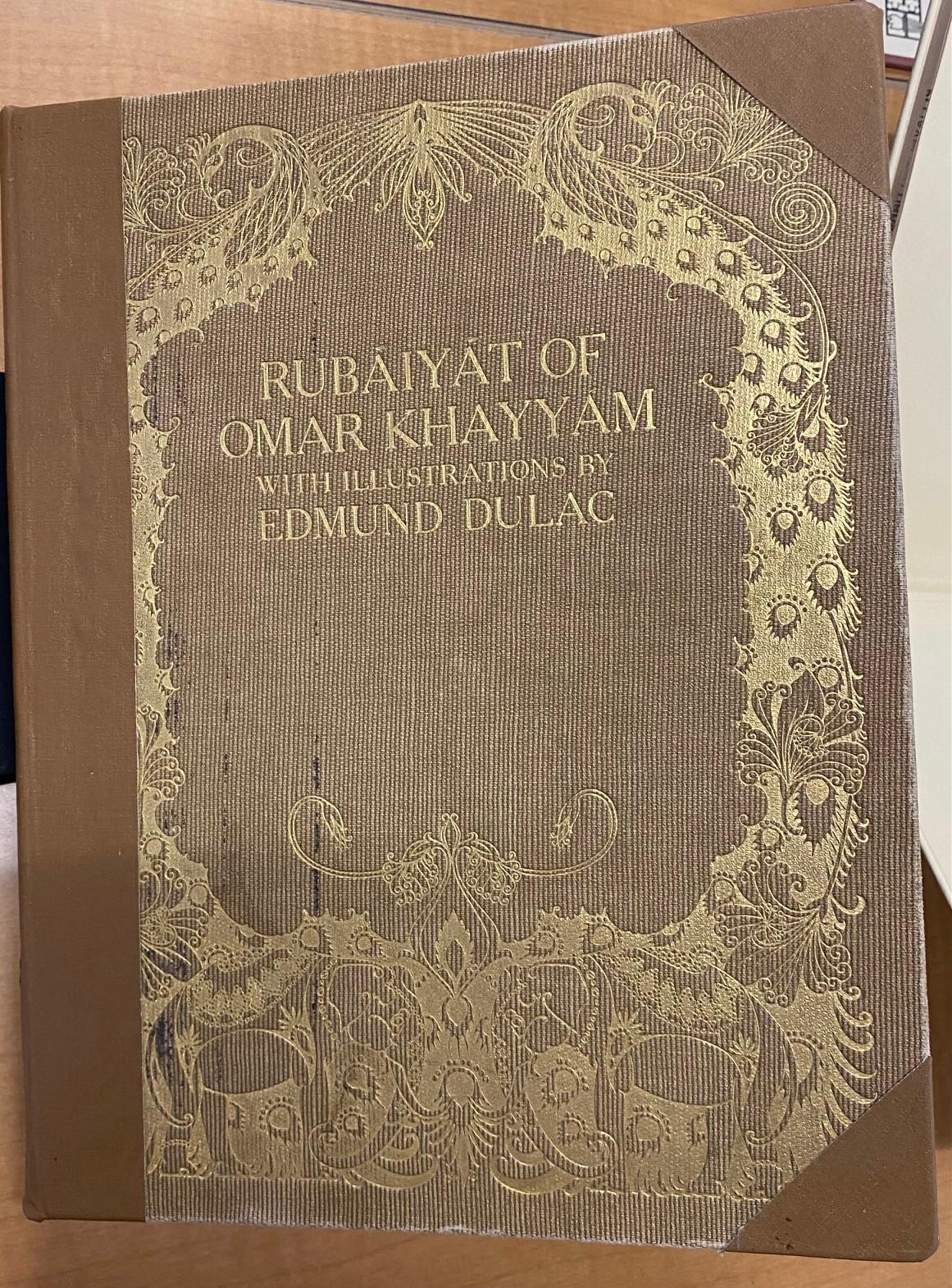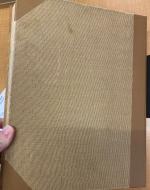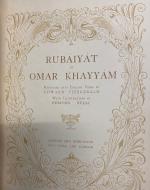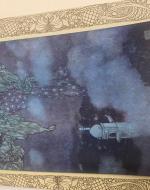Created by Michaela Bauer on Wed, 05/03/2023 - 01:11
Description:
The edition of Rubaiyat of Omar Khayyam that I chose to look at is the one that was published in 1909 and “presented” to the Oregon State University library by Charles Fox. I chose this edition specifically because of the unique aspects of it.
For one thing, while the cover (see FIGURE 1) art has no illustration, it does have golden peacocks around its border and the title on the cover appears to be made from the same golden material used to make the decorative border. The backcover (see FIGURE 2) itself appears to be made of a light, (I would say “mossy”) green canvas and oth the spine of the book and the corners are covered with a darker green leather (likely to protect the book by perseving the binding.) The inside of the book’s cover contains more peacock motifs because the white inner lining is decorated with peacock feathers and has a similar gold color (though here, it is more matte than reflective).
On the title page (see FIGURE 3), the border gives us even more peacock motifs because of the border art which surrounds the information, having gold peacocks at the top with two feminine faces next to them. The information in the center says that it was translated into English by Edward Fitzgerald and that the illustrations were done by Edmund Dulac.
The illustrations (see FIGURE 4 and FIGURE 5) themselves are very beautiful and colorful. They resemble Middle Eastern paintings during the middle ages. The illustrations have a type of wax paper to cover the illustrations to protect them and the protective cover is opaque and can be lifted to reveal the illustration. It was also common for protective covers to be on illustrations of books that were gifts to others (and it was common to give books as gifts during the 20th century, and Rubaiyat of Omar Khayyam was a popular book to give as a gift).
Based on the information, we can conclude that this edition of Rubaiyat of Omar Khayyam was likely a gift. Unfortunately, we are not able to confirm this since there is no inscription, but it is likely that there was a note to the receiver that came with the book that was not with the book at the time.
Copyright:
Associated Place(s)
Part of Group:
Featured in Exhibit:
Artist:
- Edmund Dulac






